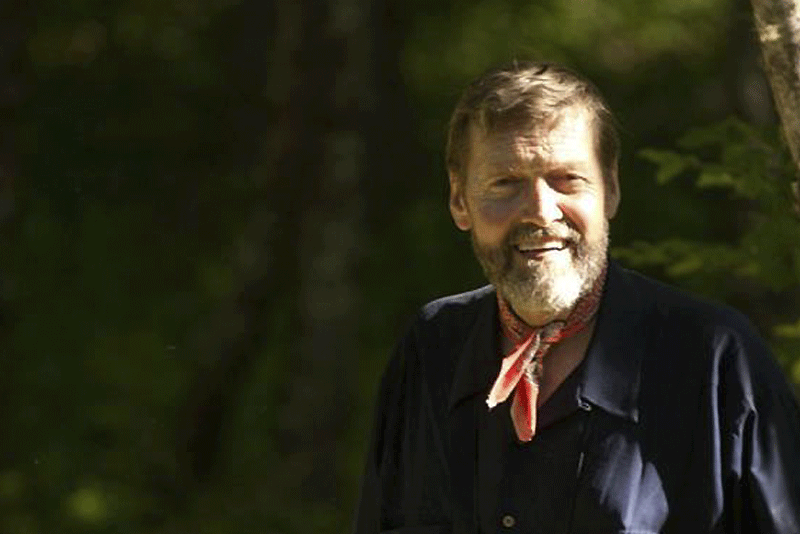Patagonian Artists
REALISM
Ivan Moricz Karl
The Hungarian-born Ivan Moricz Karl lived in Mexico and then Buenos Aires, where he became a disciple of the wildlife painter Axel Amuchástegui. In the late 1970s, he moved to San Martin de los Andes, settling in a cabin immersed deep in the forest along the shores of Lake Lolog. From this remote and lonely spot, he started painting flora and fauna through a hyperrealist eye. Ivan’s art possesses a special atmosphere, converting its subjects -birds, animals, plants- into objects of admiration.
Ivan was represented by Rountree Tryon Galleries in London, and has shown his works in Johannesburg, South Africa. He can still be found at Boquete, the far end of Lake Lolog, his chosen place to live and paint.

Media about Ivan:
THE PAINTER IN THE WOODS
Some of his work:
Lydia Zubizarreta
Lydia lives in Quila Quina, surrounded by native forests and lupine flowers, very close to Lake Lácar and the river that flows into it. Her relationship with the place where she lives is undoubtedly very personal, very close. Born in Buenos Aires, she started coming to San Martín in 1966. The very frequent visits became her routine, and in 2005 she stayed definitively in these lands with her family: "this place has changed me forever, like someone who interacts with a friend. You breathe in deeply, you let the message sink in… if you make silence, it speaks to you".
About her creative process, Lydia says it has three stages. The first is marked by her walks: "When I go out I always take paper and watercolors in my backpack. Wherever I see what I want to paint, I spread out my blanket, prepare my brushes and the rest of my things (I sometimes even take a little chair). I choose and use the best material there is, I am very careful with that. I stay there for an hour, an hour and a half, no more than that. Planning a watercolor is fast, you get carried away. If you use reasoning you get stuck".

IMPRESSIONISM
Guido Franco Ferrari
Born in Bariloche in 1994, he lives in Villa La Angostura and paints nature since he was very young.
A lover of natural life, he regularly paints au plein air. Everyday rural life, wild landscapes and native fauna are his most common themes. Although some of his work is done in a studio, in most cases the creative process begins with a long walk that allows him to go into nature in search of its essence. Then his palette knives become the instruments that allow him to capture on the canvas the oil strokes that will give rise to the work.
Guido seeks to rescue the impressionist technique of modernity in a contemporary context with the aim of highlighting the natural beauty that surrounds us in order to put it in value to encourage its preservation.

Media about Guido:
Plein Air Patagonia Argentina
METAL WORKS
Emanuel Céliz
Born in Córdoba in 1988, son of a silversmith, Emanuel worked for some time in his father's workshop as a silver craftsman and acquired the trade. His yerberas, sugar bowls and mate gourds and buckles showed a special sensitivity and an uncommon dexterity. As the years went by, in the search for greater freedom, he ventured into other more accessible metals that allowed him to experiment and fly towards creativity. He then abandoned the utilitarian sense of his works, expanded the scale and even delved into abstraction.
He found in copper his greatest ally. Ductile, manageable and sensitive, the prehistoric metal allowed him flights of growing creativity as he developed his own techniques to work with it. His "forms" acquired a common denominator: a spatial respect with which the artist expresses his ideas and feelings; a suggestion of volumes in the third dimension.
Emanuel's works will stand the elements if they are installed outdoors. The surface finishes, in the case of copper, include patinas, fire oxides and wax coverings, according to personal techniques that the artist has gradually developed. When he works on iron, he resorts to a lacquering process, and in the case of minerals (marble and alabaster) he generally finishes his works with a careful polishing that plays beautifully with the light.
Translation and adaptation of a text by Carlos María Pinasco, art consultant.

Media about Emanuel:
OCASO DEL RIO

